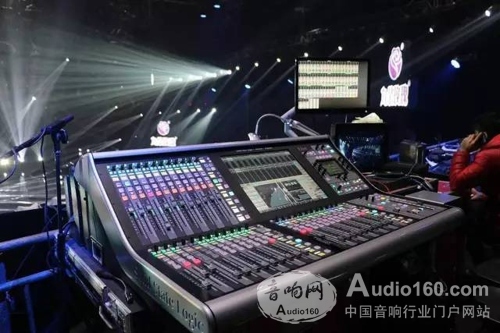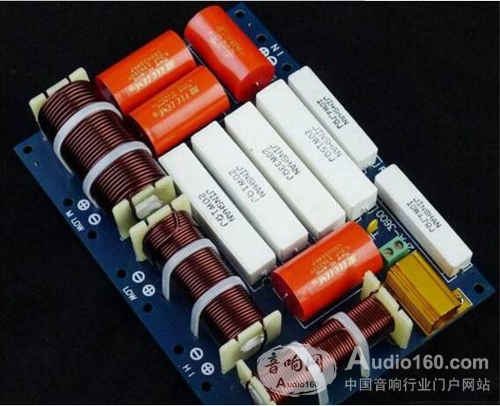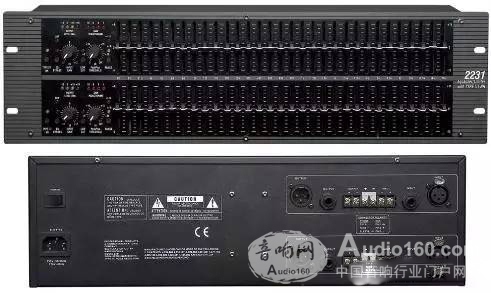What is a crossover?

The frequency divider is to distinguish the sound signals of different frequency bands, respectively give amplification, and then send them to the speakers of the corresponding frequency bands for playback. In high quality sound reproduction, electronic crossover processing is required.

It can be divided into two types: (1) Power divider: located behind the power amplifier, set in the speaker, through the LC filter network, the power audio signal output by the power amplifier is divided into bass, midrange and treble, respectively sent to Respective speakers. The connection is simple and convenient to use, but the power consumption, the audio valley point, the cross distortion, the direct relationship between the parameters and the speaker impedance, and the impedance of the speaker is a function of the frequency, which deviates greatly from the nominal value, so the error Also larger, not conducive to adjustment. (2) Electronic crossover: The device that divides the audio weak signal is located in front of the power amplifier. After dividing the frequency, each independent power amplifier is used to amplify each audio frequency band signal, and then sent to the corresponding speaker. unit. Due to the small current, it can be realized with a smaller power electronic active filter, which is easier to adjust, reduce power loss, and interference between speaker units. The signal loss is small and the sound quality is good. However, this method uses an independent power amplifier for each path, which has high cost and complicated circuit structure, and is applied to a professional sound reinforcement system.
What is an exciter?
The exciter is a harmonic generator that uses human psychoacoustic characteristics to modify and beautify the sound signal. By adding various methods such as adding high-frequency harmonic components to the sound, it is possible to improve the sound quality, the timbre, and the penetration of the sound, and to increase the spatial sense of the sound. Modern exciters not only create high-frequency harmonics, but also features low-frequency extensions and musical styles to make bass sounds more perfect and music more expressive.

Use an exciter to improve the clarity, intelligibility and expressiveness of the sound. Make the sound more pleasant, reduce the listening fatigue and increase the loudness. Although the exciter only adds about 0.5dB of harmonic content to the sound, it actually sounds like the volume has increased by about 10dB. The sound loudness of the sound is significantly increased, the stereoscopic effect of the sound image, and the degree of separation of the sound are increased; the positioning and layering of the sound are improved, and the sound quality of the reproduced sound and the reproduction rate of the magnetic tape can be improved. Because the acoustic signal loses high-frequency harmonic components during transmission and recording, high-frequency noise occurs. At this time, the former uses the exciter to compensate the signal first, and the latter can filter the high-frequency noise by the filter, and then create a high-pitched component to ensure the sound quality. The adjustment of the exciter requires the sound engineer to judge the sound quality and tone of the system, and then adjust according to the subjective listening evaluation.
What is an equalizer?
An equalizer is an electronic device that can separately adjust the amount of electrical signal amplification of various frequency components. It compensates for defects in the speaker and sound field by adjusting the electrical signals of different frequencies, and compensates and modifies various sound sources and other special effects. The equalizer on the general mixer can only adjust the three-stage frequency electrical signals of high frequency, intermediate frequency and low frequency respectively.

Equalizers fall into three categories: graphic equalizers, parametric equalizers, and room equalizers.
1. Graphic equalizer: also known as chart equalizer, through the distribution of push-pull keys on the panel, can intuitively reflect the adjusted balance compensation curve, the improvement and attenuation of each frequency at a glance, it uses constant Q value technology, each There is a push-pull potentiometer at each frequency point. The frequency bandwidth of the filter is always the same whether the frequency is boosted or attenuated. The commonly used professional graphic equalizer is to adjust the signal of 20Hz~20kHz into 10 segments, 15 segments, 27 segments and 31 segments. In this way, people select different frequency equalizers according to different requirements. Generally, the frequency points of the 10-band equalizer are distributed at octave intervals. In general, the 15-band equalizer is a 2/3 octave equalizer. It is used in professional sound reinforcement, and the 31-band equalizer is 1. /3 octave equalizers, most of which have the need for fine compensation in the more important cases, the graphic equalizer is simple and straightforward, so it is widely used in professional audio.
2. Parametric Equalizer: Also known as parametric equalizer, the equalizer can be finely adjusted for various parameters of equalization adjustment. It is attached to the mixer, but there are also independent parametric equalizers. The parameters of the adjustment include frequency bands. Frequency, gain and Q factor of the quality factor can beautify (including ugly) and modify the sound, making the sound (or music) style more distinct and colorful, and achieving the desired artistic effect.
3. Room equalizer, equalizer for adjusting the frequency response characteristic curve in the room. Because the decorative material has different absorption (or reflection) amount of different frequencies and the effect of the normal resonance, the room equalizer must be used. Objectively compensate for the frequency defects in the construction of sound. The finer the frequency band is, the sharper the adjusted peak is, that is, the higher the Q value (quality factor), the finer the compensation during adjustment, the thicker the frequency band is, the wider the adjustment peak is. When the sound field transmission frequency characteristic curve is more complicated It is more difficult to compensate.
What is a compression limiter?
The compression limiter is a general term for compressors and limiters. It is a processing device for audio signals that compresses or limits the dynamics of audio electrical signals. The compressor is a variable gain amplifier whose amplification factor (gain) can be automatically changed with the strength of the input signal and is inversely proportional.

When the input signal reaches a certain level (the threshold is also called the threshold), the output signal increases as the input signal increases. This is called Compressor; if it is no longer added, it is called Limiter. In the past, the compressor used Hard-knee technology, and the input signal reached the threshold. The gain is immediately reduced, so that the signal is dynamically abrupt at the inflection point (the turning point of the gain change), causing the human ear to clearly perceive a strong signal being suddenly compressed. In order to solve this problem, the modern new type of limiter adopts soft-knee technology. The compression ratio of the pressure limiter before and after the threshold is balanced, and the gradual change makes the compression change difficult to detect and the sound quality is further improved. .
The pressure limiter keeps the volume of the instrument and the singer in a certain balance during the recording process; it ensures the balance of various signal strengths. Sometimes used to eliminate the singer's vocal sound, or to change the compression and release time, to produce a special effect of the "reverse sound" of the sound from small to large. It is used in broadcast systems to compress a large dynamic range of program signals to improve the average transmission level while preventing modulation distortion and preventing transmitter overload.
In the sound reinforcement system of the dance hall, the pressure limiter compresses the signal while maintaining the original program, reducing the dynamics of the music to meet the requirements of the sound reinforcement system and artistic activities. Although the pressure limiter has many uses, modern compressors generally adopt new technologies such as soft inflection points, which can further reduce the side effects of the compressor of the compressor, but it does not mean that the pressure limiter has no effect on the sound quality. Reappeared.
Therefore, in the sound reinforcement system, do not abuse the compressor, even if it is used, you should use the pressure reducer to process the signal with caution. This is not only the need to protect amplifiers and speakers, but also the need to improve sound quality.
DC Permanent Magnet Gear Motor
Dc Motor,24V Dc Gear Motor,Electric Gear Motor,Dc Permanent Magnet Gear Motor
NingBo BeiLun HengFeng Electromotor Manufacture Co.,Ltd. , https://www.hengfengmotor.com